The world population is rapidly ageing
Between 2000 and 2050, the proportion of the world’s population over 60 years will double from about 11 % to 22 %. The absolute number of people aged 60 years and over is expected to increase from 605 million to 2 billion over the same period. The world will have more people who live to see their 80s or 90s than ever before. The number of people aged 80 years or older will have almost quadrupled to 395 million between 2000 and 2050.[1]
The probability of needing care increases with age. Less than 1 % of those younger than 65 years need long-term care, while 30 % of the women aged 80 years or over use long-term care services, on average across the OECD [OECD, 2011].
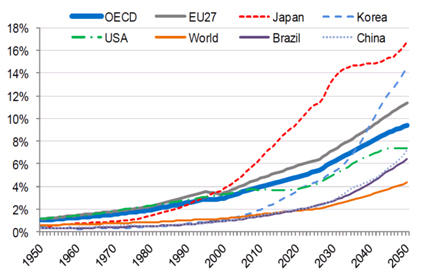
Rapidly increasing share of the population aged over 80 years [OECD, 2011]
The European Commission published an extensive report in Ageing in Europe trends in 2012. Their findings showed the age profile of the EU is expected to change dramatically in the coming decades. Specifically, the population of the EU will be slightly higher and older in 2060. The following are the key points of interest to our Scenario Workshops.
Share of older people rises
The share of those aged 65 and over is projected to rise from 17% to 30%. Therefore, the EU will have approx. two people of working age to every person aged over 65. Currently there are four people of working-age to each person aged over 65 years.
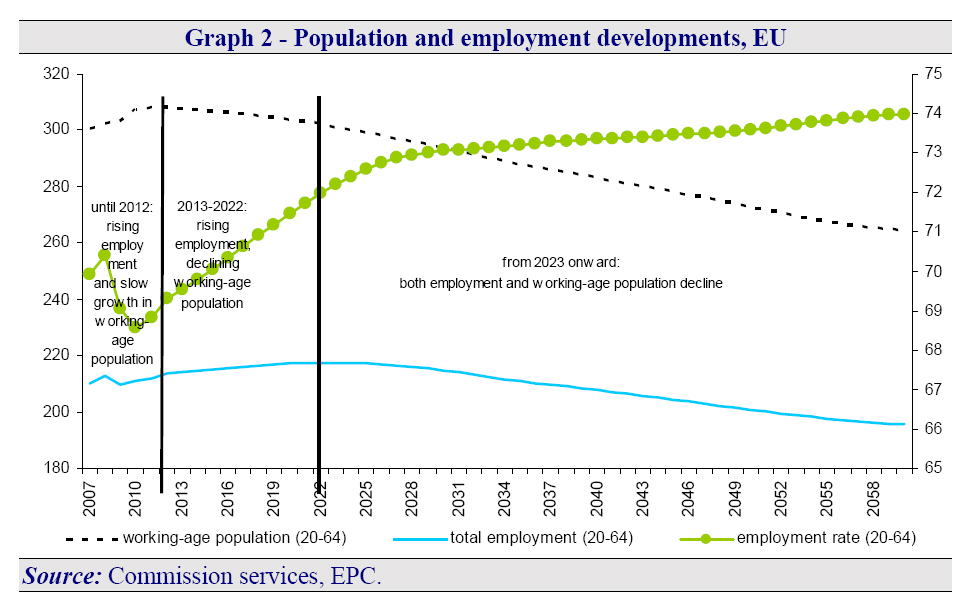
Economic consequences
The total number of workers is estimated to decline by 15.7 million to 195.6 million in 2060. The decline in the workforce will effect growth and per capita income, with a forecasted decline in potential growth.
![]()
Life expectancy rises
Life expectancy at birth is projected to increase from 76.7 years in 2010 to 84.6 in 2060 for males and from 82.5 to 89.1 for females.
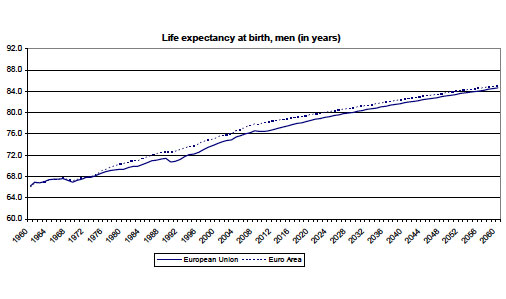
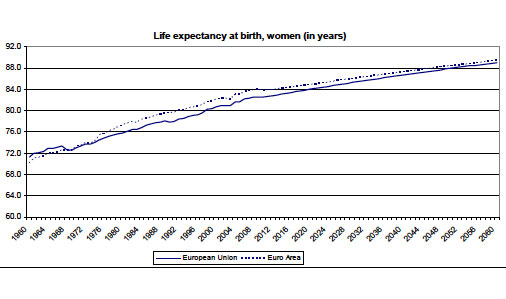
Changes in the structure of the population by the main age groups, EU27 (in%)
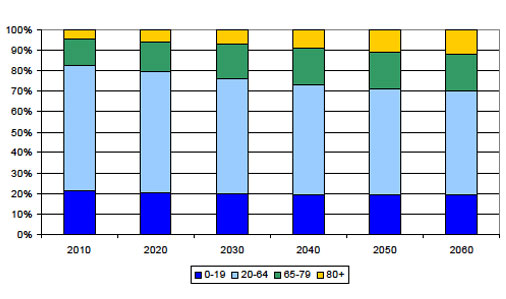
Source: The 2012 Ageing Report: Economic and budgetary projections for the 27 EU Member States (2010-2060). European Commission.
Demand for care services is increasing
The demand for long-term care workers is expected to double (from 2008) by 2050 [OECD, 2011]. More and more women participate in the formal labor market and are likely to contribute to the decline in the availability of family caregivers. Many European countries are dealing with a shortage of trained healthcare professionals. A further societal change is that people demand more patient-oriented care. Patients become more involved in their treatments and in medical decision taking.
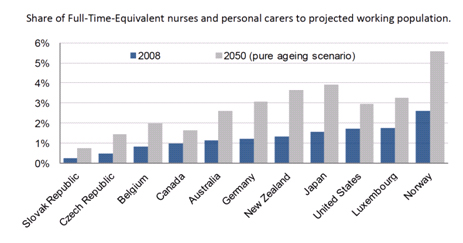
Ageing in 2025
Technology and service innovations are expected to help respond to the demand for sustainable healthcare systems. The introduction of Information and Communication Technology (ICT) and telemedicine is estimated to improve efficiency of health care by 20 %, improving at the same time the quality of life of patients [EU, 2013 (page 6)].
Technologies like telecare, telemedicine, welfare technology, robotics, ambient assisted living as well as widely used consumer technologies like PCs, smartphones and tablets are likely to play a key role to support senior citizens in the future[2]. They have the potential to enable seniors to
- live independently and securely at home longer
- avoid, delay or reduce hospitalization
- better socialize and participate in society
- live better in care and nursing schemes
The technologies can be used in many ways. Our society can choose different strategies for the care services, and for the introduction of new technological tools in this sector. The technology promises many opportunities, but there are challenges to be solved and ethical dilemmas to be considered. How can we best use new technology in care services, and what type of policy options are policy makers faced with?
[1] WHO: Interesting facts about ageing.
[2] See page Technology Description for technologies that can better manage senior’s everyday life.
